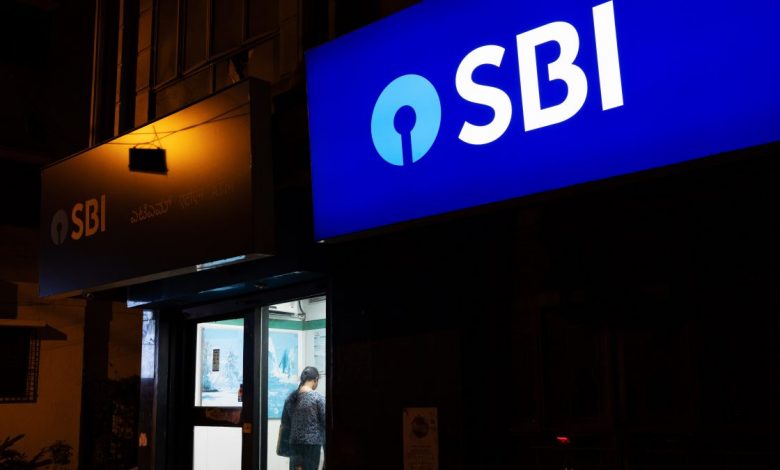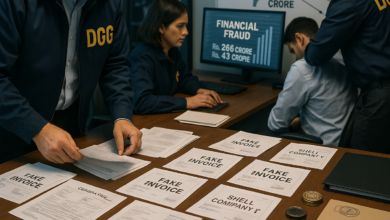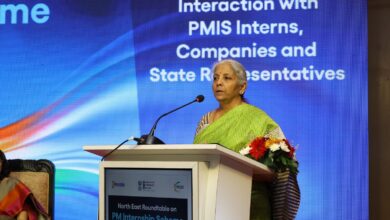Random Reflections- Is State Bank of India going to be privatised first?

The government is in a privatisation spree in spite of wide spread opposition. The RBI, Niti Ayog (Aniti Ayog) and Finance Ministry are used to give confusing signals. While a RBI Dy. Governor demands reduction of government share holding in public banks to 26%, Niti Ayog suggests privatising few banks whereas the Finance Ministry says there is no plan for privatisation. They have done this before on various occasions including on merger. A very clever way of stating it even in Parliament is, “There is no plan as of now”. That can be even up to that minute or day.
But multiple efforts are going on. It’s no secret that Financial Sector Development and Regulation (Resolution) Bill is awaiting cabinet approval which will pave way for privatisation of banks without coming to the Parliament. IDBI has been already declared a private bank. Yes Bank which has been rescued for the time being is not a takeover by SBI as was done in the case of Oriental Bank of commerce taking over Global Trust Bank. It continues to be a private bank with oxygen support from public sector banks.
An important lesson from the past is that the government uses the biggest bank for trials for its experiments. Let’s see some examples.
While giving contradictory statements like weak banks will be merged with strong banks, weaker banks will be merged, areas wise banks will be merged etc, the government first merged the associate banks of SBI with parent bank and in addition the Women’s Bank of India was also merged with SBI. The unions and associations took different stand and the merger was completed reducing staff, providing VRS and closure of more than 1000 offices. Further mergers became easy.
Business correspondents in SBI were brought under national business correspondents including Reliance so that they don’t unionise and ask for regular appointment. Other banks are following suit.
In the name of career development system a performance based incentive was introduced in spite of severe opposition by the association and union. The management promised to review after sometime but continues without any review though there is lot of dissatisfaction. Now other banks are following suit.
Now unilaterally a scheme has been announced for voluntary retirement called, Second Innings Tap-Voluntary Retirement Scheme-2020 (SITVRS-2020) to optimise human resources and costs. It will be kept open for 3 months from Dec 1 to Feb end every year. As per the proposed eligibility criteria 11565 officers and 18625 award staff will be eligible for the scheme. 50% of salary for the residual period will be paid an ex-gratia with a maximum of 18 months’ salary (Hindu Business Line Sept 02, 2020). In the 2001 VRS more than 30000 applied but 20874 were given VRS. That happened in all banks except Corporation bank and more than a lakh employee’s left.
The employee strength of SBI has already come down to 249000 as on March 2020 from 257000 a year ago. The deposits grew by 11.34% and advance grew by 5.64% during this period. In 2015-16 SBI had 283000 staff. After the merger of associate banks, with a VRS 3569 staff left. That time SBI VRS was proposed but the association and union refused and stopped. Now also they are opposing but visible actions are yet to be seen.
In the present situation more loans have to be given for which we require more branches and staff. Due to pressure of work an exodus will take place if VRS is offered with 18 months salary. Surprisingly seeing widespread opposition the management is spreading a message that 14000 employees will be recruited. But they don’t say what category and when? Already many announcements have come for contract employees in categories like, faculty, digital executive, executive FI&MM, Sr executive social banking, vice president, stressed assets, wealth management etc. May be more contract employees? When the country is in huge unemployment, need more branches of banks and staff in rural areas is it correct to offer a VRS? (In 2018 SBI received around 28 lakh job applications for only 8000 clerical jobs. This was very similar to the ongoing situation of the Indian Railways, which received 23 million applications for 90,000 posts that were vacant.)
It is a known fact that US Treasury Secretary Lawrence Summers under President Bill Clinton and another Treasury Secretary Timothy Geithner under President Barack Obama had urged the government to privatise SBI First. That pressure is still there from US, IMF and World Bank.
With VRS, the uions and associations will become weak. Already they have become weak due to large scale outsourcing, contract employment, re-employment for retired staff and massive number of business correspondents (61102 as on March 2020). That will make it easier for privatisation.
Now there is a concerted move to send out people through a poor wage revision and denial of 5 day week making them inferior to central and state government employees. The aim is to have contract / outsourced / reemployed employees who can be hired and fired to satisfy IMF & WB and get better ranking in ease of doing business and also more loans.
The chairman who got an extension of 3 years when he was about to retire has now come out with a VRS scheme on the same day he was appearing for the interview for extension. Though the bank’s board bureau did not select him, rumours are around that he is still lobbying for extension or some other position in the government.
It appears like a calculated move of the government to reduce regular staff and have contract employees more so that privatisation can go through easily.
The Yono platform operated with Reliance support, Jio Payment Bank with 30% share of SBI, Ms. Arundhathi Bhattacharyya, former chairman sitting as Director in Reliance, Ms. Manju Agarwal and former Dy. Managing Director sitting in the board of Jio Payment Bank, Reliance Asset Reconstruction Company buying bad loans from SBI indicate that SBI is moving towards privatisation faster. Already SBI has promoted 14 private limited companies out of which its shareholding is less than 50% in many. Once privatisation is done in SBI it is very easy in other banks.
The government can still say we have 26% share holding and this is a government bank.
The board of directors will be representing corporates and their interest. Like Indian Petro Chemicals limited in which Reliance was initially 26% shares but later swallowed fully, Ambani or Adani the biggest borrowers will own the bank one day.
Who cares for the citizens of the country? There are fintechs, small banks, payment banks, Non Banking Financial Companies and Nidhis who can fleece them but they will have no alternatives.
The, “Second Innings Tap Voluntary Retirement Scheme -2020” in the largest bank of the country which once used to be proud of serving the smallest man in the country appears to be in that direction.
Time to Wake Up!
That’s the standard technique of privatisation, defund, make sure things don’t work, people get angry, you hand it over to private capital – Noam Chomsky
Views Expressed here are those of Thomas Franco is former General Secretary of All India Bank Officers’ Confederation.




